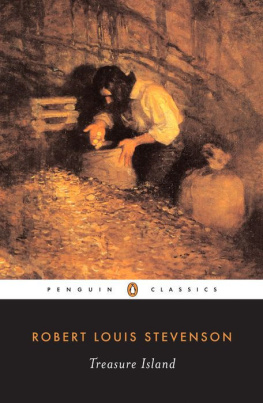William S. Crooker
Copyright 1993, 2001 William S. Crooker
All rights reserved. No part of this book covered by the copyrights hereon may be reproduced or used in any form or by any meansgraphic, electronic, or mechanicalwithout the prior written permission of the publisher. Any request for photocopying, recording, taping, or any information storage and retrieval systems of any part of this book shall be directed in writing to the Canadian Reprography Collective, 1 Yonge Street, Suite 1900, Toronto, Ontario, M5E 1E5.
P.O. Box 9166
Halifax, N.S. B3K 5A5
Design: Arthur B. Carter, Halifax
Diagrams were prepared by, and remain the property of, W.S. Crooker, and W.S. Crooker and Associates Ltd., Halifax, N.S.
Crooker, William S.
Includes bibliographical references.
Issued also in print formats.
1. Oak Island treasure site (N.S.) I. Title.
Nimbus Publishing acknowledges the financial support for its publishing activities from the Government of Canada through the Canada Book Fund (CBF) and the Canada Council for the Arts, and from the Province of Nova Scotia through the Department of Communities, Culture and Heritage.
Preface
B efore 1958, Oak Island was a well-kept secret. Its legacy was confined to miscellaneous newspaper and magazine articles, the prospectuses of treasure search companies, and isolated chapters of a few books on buried treasureall scattered over a period of about a hundred years. Then, in 1958, The Oak Island Mystery was published. In it, Reginald V. Harris related the history of island activity since 1795, when the first search began. An attorney, Harris had represented two Oak Island treasure hunters. The book is definitive historically, but has its limitations. It leaves many questions unanswered, such as: Who constructed the labyrinth of shafts and tunnels? When was it done? Why was it done? How was it done? These questions have captured my imagination for many years.
A year prior to the release of Harriss book, I had been an engineering student and survey party chief on a highway construction project several miles north of Oak Island. During a mid-morning coffee break, I overheard the men in my crew talking about a nearby island where people were digging for an enormous treasure. It was another Fort Knox and it was there for the taking, if anyone could get to it. The men talked excitedly about an unimaginable quantity of gold buried deep beneath the island, protected by a labyrinth of shafts and tunnels connected to the ocean. Every time treasure hunters
had dug within reach of the cache, they had been driven out by a flood of water from the sea. After first hearing the story and later reading Harriss book, I began to follow newspaper accounts of the ongoing treasure searches. This is how I became involved.
In 1972, I took my boat The Scotia Lass on my first ocean cruise to Mahone Bay, where Oak Island is situated. Subsequently, I made annual excursions to cruise the waters of the bay in search of clues. I reported my findings in The Oak Island Quest, which was published in 1978.
The Oak Island Quest outlines the history of the hunt up to 1978 and it covers most of the theories and speculations of investigators and writers of the day. Some of the speculations I offered were tongue-in-cheekadvanced in the interests of not limiting the possibilities, as opposed to representing any firm convictions on my part. The reader is left to reject what he or she feels is too far out to consider.
After writing The Oak Island Quest, I have continued to follow the islands saga as it has unfolded, and in 1991 I began to write Oak Island Gold.
While I was still outlining Oak Island Gold, one of the islands current treasure hunters emerged out of the blue to disclose a startling discovery. He then engaged me to conduct an engineering survey. My work on the island in connection with this find led me to an entirely new path of inquiry. This, in turn, led to the formulation of a novel theory, different from any that had come before. Although I began the relatively straightforward task of chronicling an update of the treasure hunt, I ended up with far more than I had bargained for.
Since a treasure has yet to be recovered, I cannot profess to have solved the mystery once and for all. Although circumstantial evidence abounds, the irrefutable proof is still in the proverbial pudding.
Perhaps the details of this unexpected survey will spark you to become engaged in the questeither as an armchair philosopher or as a digger. Perhaps these findings will bring us all one step closer to discovering the irrefutable proof that still eludes our grasp.
W. S. C.
Acknowledgements
A special acknowledgement is due to the following people for their kind assistance in providing valuable information necessary for the production of this book. Alphebetically they are:
Dan Blankenship, Triton Alliance Project Manager
Joseph Judge, Retired Senior Associate Editor of the National Geographic Magazine
Dr. Lian Kieser, Ph.D., Interstate Laboratory, Toronto, Ontario
Harold Krueger, Krueger Enterprises, Inc., Geochron Laboratories Division, Cambridge Massachusette
Graham McBride, Maritime Museum of the Atlantic, Halifax, Nova Scotia
Frederick G. Nolan, Nova Scotia Land Surveyor
Edomond Telfer, Research Scientist, Environment Canada
David Tobias, President, Triton Alliance
Tim Whynot, Extension Services Division, Nova Scotia Department of Natural Resources
Thanks also to Andrew Safer, Halifax-based freelance editor and writer, who critiqued and edited the manuscript.
Map of Maritime Provinces and Maine showing location of Oak Island.
One
The Mystery Begins
J une 17, 1992. Frederick G. Nolan, Nova Scotia land surveyor, slowly unzipped a black briefcase and gave me a cryptic smile. We were seated at a corner table in a popular coffee shop overlooking Halifax Harbour. The last rays of a scarlet sunset reflected off the glossy surface of a colour photograph being pushed in my direction. Take a look at this, Nolan said, and tell me what you see.
A practicing professional surveyor of Bedford, Nova Scotia, Nolan owns a portion of Oak Island, site of the two-century-old treasure hunt that has baffled scores of treasure seekers. Nolan has been involved in the search for over thirty years. Like a man manacled to an obsession, he has surveyed, drilled, and dug. I had an intuitive feeling that the photo was going to lead me to a place where only he had ventured. My intuition was correct.


















